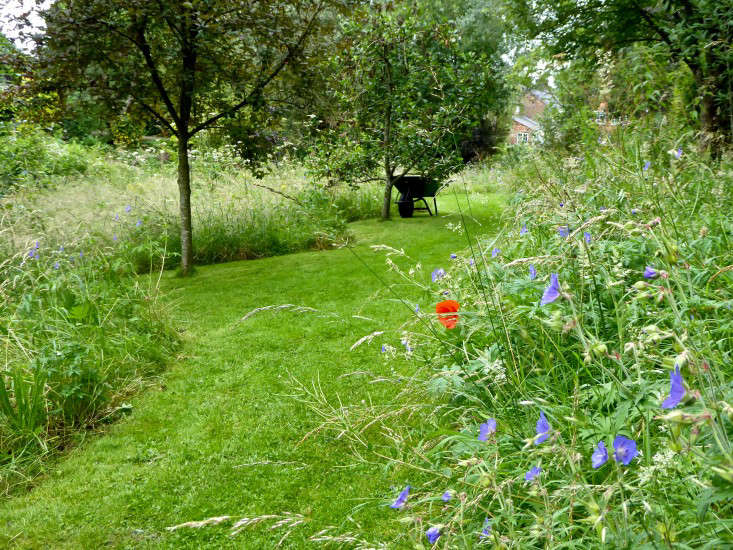Fuchsias in hanging glass terrariums? It’s an idea I couldn’t imagine when I was growing up next to a neighbor who was an older woman whom I considered to be my surrogate grandma. In her garden she had a large “old-fashioned” fuchsia bush. Before entering her house to tinker with her massive piano organ, I would stop to say hello to the fuchsia—and to squeeze the air-filled blossoms. I loved that plant for its flamboyant two-toned colors, for the satisfying “pop” sound the flowers made, and because it bloomed all. the. time.
Nowadays, there is no reason to think of fuchsias as a grandmotherly plant. Thanks to cross breeding and plant hybridization, the selection of fuchsias has grown to include varieties with delicate flowers that dangle like ornaments and two-toned leaves that look dip dyed. With each new fuchsia, my love has only grown.
Read on to see how we persuaded a few fuchsias to try life as houseplants, in hanging glass ball terrariums:
Photography by Mimi Giboin for Gardenista.

Fuchsia takes its name from the 16th-century German botanist Leonhart Fuchs although he was not the first European to discover the species. (After he found fuchsias growing in the Caribbean, Father John Plumier-a French Catholic priest-attempted to send specimens home but all were lost when his ship sank in a storm.) Luckily, more species were collected later from the plants’ native region (Mexico to South America), and by the Victorian era fuchsia adoration was rampant.

Fuchsia triphylla and others were the first to become popular in Europe but others quickly got noticed. After Europeans arrived in North America, the flower gained popularity in regions north of its native Mexico. Speaking locally on the West Coast, fuchsias became increasingly admired because of our mild winters and the ability for the flower to thrive and survive here.


In 1930, representatives from the new American Fuchsia Society traveled to Europe to collect hybrid fuchsias. The collection was divided between Berkeley Horticulture Nursery and the UC Botanical Garden at Berkeley. And here’s something interesting: when fuchsias began to be bred in America, flower size was intentionally increased—not surprisingly. And because we believe bigger is better here, popularity rose again and hardier breeds were developed.



Why You Should Grow Fuchsias
- Fuchsias are a true hummingbird magnet, plus butterflies and bees seem to equally adore the bounty of colorful blossoms.
- They thrive in all degrees of shady conditions, but prefer full morning sun for best bloom production.
- Fuchsias bloom continuously from spring to fall, especially if you routinely dead head. Also most bloom on current season’s growth so pruning in the spring is needed.
- Lovely on their own in a container, or stunning partnered with complementary colors, fuchsias are happy companions in the garden. Try a container filled with fuchsias, angel wing begonias, heucheras, and oxalis.
- Care is relatively simple: fuchsia likes humidity and moist soil. Fuchsias are actually perennials but they are cold sensitive and in some areas grown as annuals. The fact that they are usually sold in the disposable annuals section of nurseries is misleading to gardeners.

Another of my favorites is Fuchsia ‘Gartemeister Bonstedt’: orange red long tubes appear on dark bronze leave and stems that can happily grow to 36 inches. This vigorous upright and undemanding shrub takes the heat better than other varieties.
N.B.: For more ways we’re Rethinking Flowers, see our earlier posts about:
- Carnations: Rethinking a Supermarket Flower.
- Gladiolas: Rethinking a Funeral Flower.
- Anthuriums: Rethinking a Hotel Lobby Flower.
- Zinnias: Rethinking a Farm Stand Flower.
- Poinsettia: Rethinking a Christmas Flower.
- Gardenias: Rethinking a Corsage Flower.













Have a Question or Comment About This Post?
Join the conversation